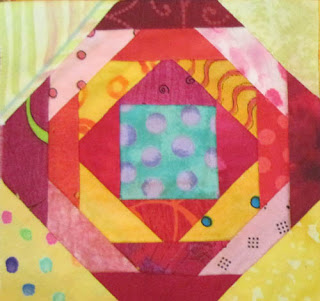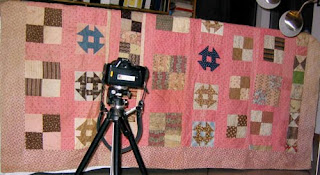Pine Tree, about 1940,
by Myrtis Henderson Eubanks, Aztec, New Mexico
Connie J. Nordstom has published a new book documenting the quilts in one county in Northern New Mexico. And She Made Quilts: The Women of San Juan County, New Mexico
gathers the information from quilt documentation days and interviews held in 2007 and 2008.
About 1940
In the best tradition of using material culture (surviving objects) to help us understand our history, Connie uses the quilts to tell the story of the people, the economics, the geography and the cultures of the area. We learn about the quilts but we also learn about living in a rural community through hard times and good. We hear about a woman who kept a bullsnake in the kitchen as the solution to her mouse problem, immigrants who came to Farmington by driving their wagon along the frozen river and many women whose grandchildren recall them as "Hard workers."
"...And she made quilts."
Autograph quilt, 1933
by members of the Scattergood Club
Farmington, New Mexico
Women's social groups such as the Country Helpful Club
and the Scattergood Club were an important part of rural life in mid-20th century America.
Like the quilts, Connie's book is a labor of love. The author's admiration for her neighbors plus her affection for local history and the spectacular landscape shine through. She's published the book herself. You can order a copy by emailing her:
or ask your quilt shop or bookstore owner to email her.
...And She Made Quilts: The Women of San Juan County, New Mexico, Their Stories and Quilts 1890-1950 is published by Casaconseula Publications, Farmington, NM. The ISBN number is 978-0615-30377-2. The 162 page book retails for $29.90




























































